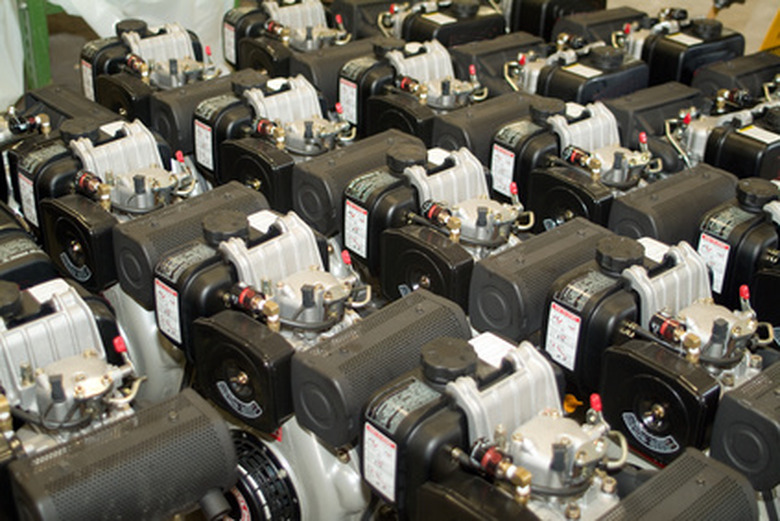How To Repair A Black Plastic Lawn Mower Gas Tank
Things Needed
-
Plastic gas tank repair kit
-
Rag
-
Scissors
A black plastic gas tank on a lawn mower is made of polyethylene. This plastic resists the chemicals in gasoline. Black plastic gas tanks are found on a variety of lawn mowers by all makes and manufacturers. Although tough and resilient, through accidents or abuse, they can crack, split, break or spring a leak. However, when this happens, they can be permanently repaired.
Step 1
Drain the tank of any residual gas. If possible, remove it for easier access, although that is not necessary. Allow the tank to completely dry.
Step 2
Sand the area that needs to be repaired with the sandpaper that comes with the kit. The area must be "roughed up" to allow a firm bond for the adhesive. Wipe the area of all dust after sanding, using a rag.
Step 3
Cut the enclosed fiberglass repair patch to fit the area, using scissors. Cut the patch to slightly overlap the place that is to be repaired.
Step 4
Mix the two-part adhesive compound together from the tubes in the repair kit. This is a 50/50 mixture of equal parts of each substance, and they can be mixed together with an applicator stick included in the package.
Step 5
Cover the area to be patched with the adhesive mix first, then press the patch firmly onto the mix. Use the applicator stick to first coat the area to be repaired. After the patch is applied, cover the outside of the patch with more of the adhesive, while overlapping the edges. Allow this patch to dry per package directions, but most two-part adhesives will be ready in an hour or less.
Tip
Some kits may have just one tube or a putty substance that does not have to be mixed. Putty must be kneaded first to activate the adhesive qualities, while a single tube of adhesive can just be applied "as is."
Warning
It is possible to repair leaking gas tanks by using a mastic stick enclosed with the kit. Rubbing the sticks over the leak will temporarily plug the hole or crack, which can then be repaired. However, use caution when you are around leaking and highly flammable gasoline. Do this procedure in a well-ventilated area, preferably outside, and stay far away from any fire or flame.
